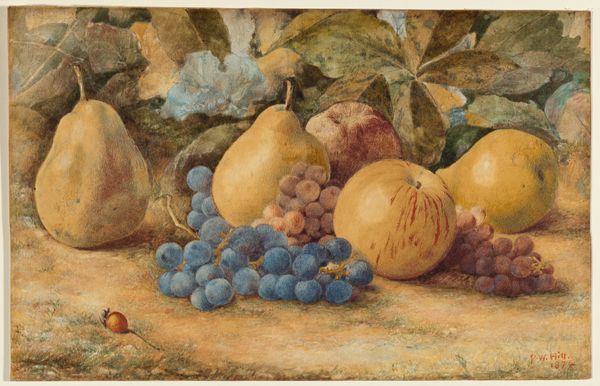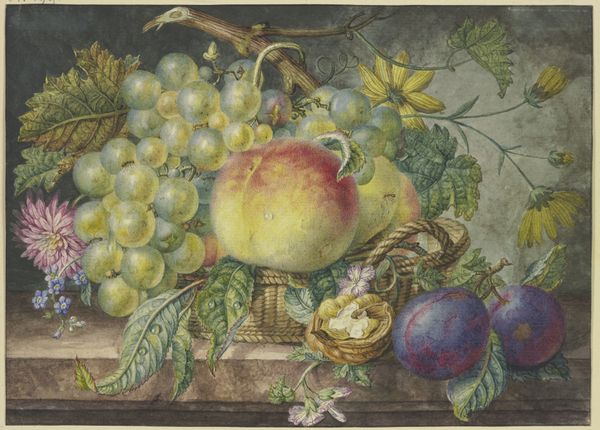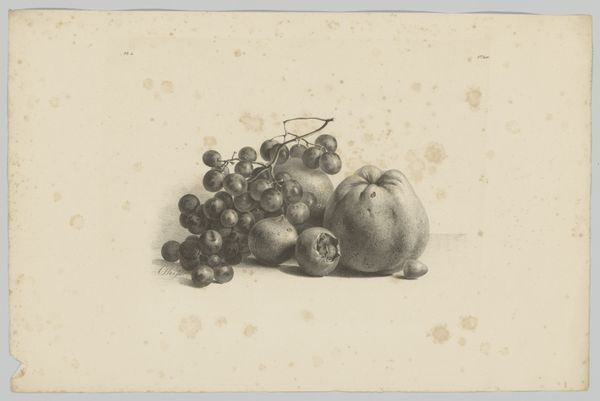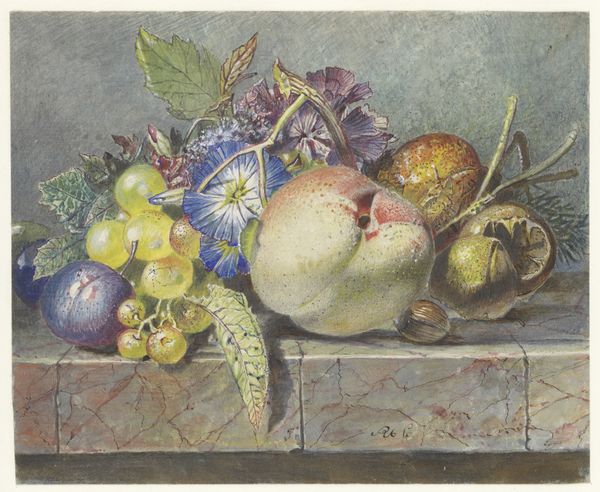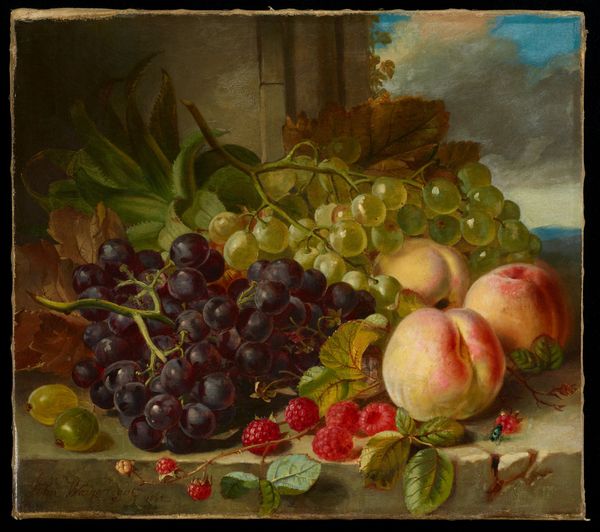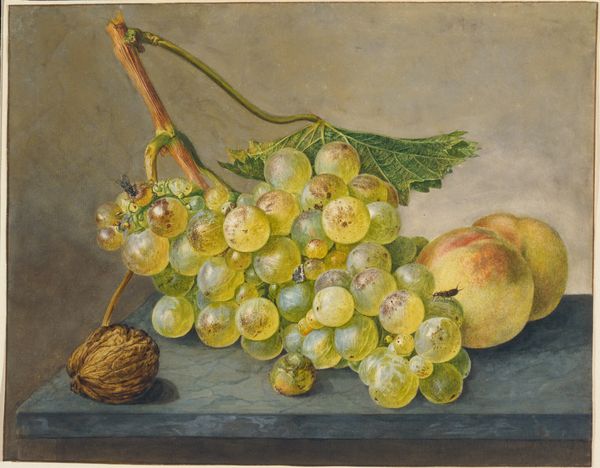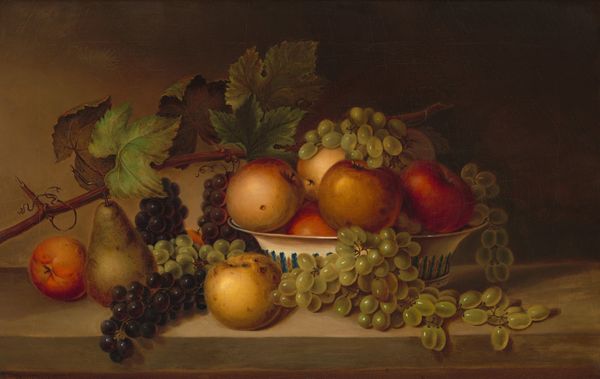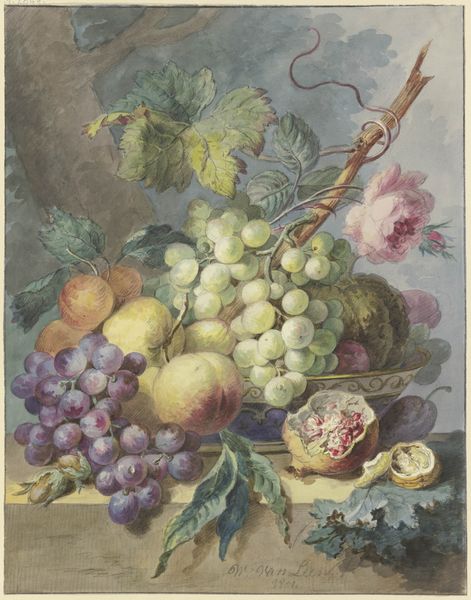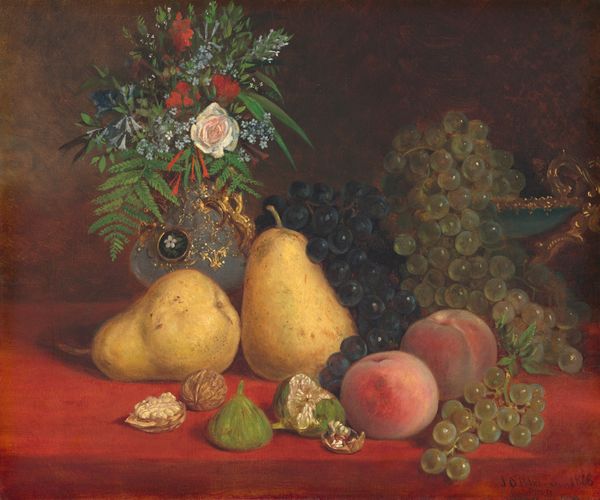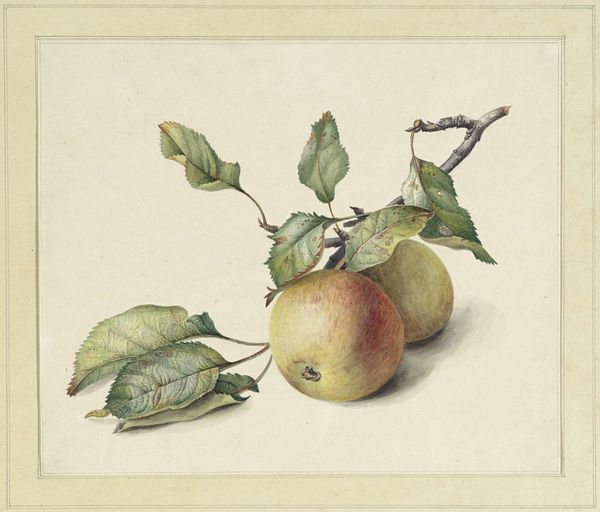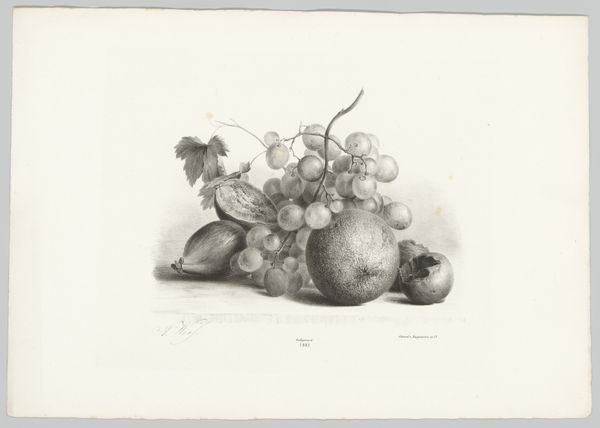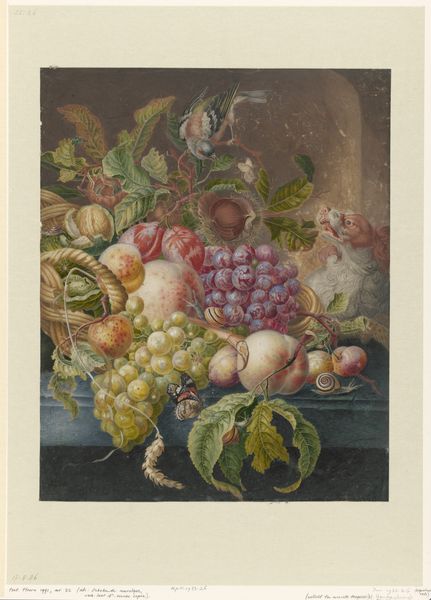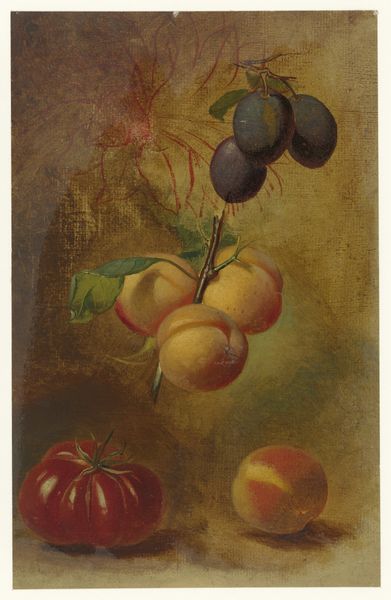
Still Life with Grapes and a Pomegranate after 1825
0:00
0:00
drawing, watercolor, impasto
#
drawing
#
oil painting
#
watercolor
#
impasto
#
realism
Dimensions: 8 1/2 x 11 3/4 in. (21.59 x 29.85 cm) (sheet, irregular)
Copyright: Public Domain
Editor: It has a kind of austere beauty. The palette is earthy but vivid, even luscious. Curator: We are looking at “Still Life with Grapes and a Pomegranate,” a watercolor drawing by William Henry Hunt, made sometime after 1825. It's currently held in the collection of the Minneapolis Institute of Art. Editor: Watercolor, you say? I'm fascinated by Hunt's meticulous layering; he builds such dimension and weight through that traditionally delicate medium. The realism is striking – almost photographic. Curator: Consider the economic context of Hunt’s still lifes, especially in Victorian England. They spoke to both aspirational middle-class and elite patrons by emphasizing meticulous detail, visible labor, and high-quality pigments. They celebrated simple things, elevated by skill. Editor: The composition feels very deliberate. A pile of ripe grapes next to a vibrant pomegranate suggests abundance. Notice the two smaller green grapes to the side – are they meant to imply choice? Or are they symbols of exclusion? I wonder if the work references wealth disparities, playing into discourses around food and access. Curator: What's compelling to me is that this isn't idealized fruit – these grapes have a bloom; that pomegranate seems perfectly imperfect. It speaks to an almost scientific study of organic materials in a rapidly industrializing world. The appeal may have been in representing what machines couldn't easily duplicate at the time. Editor: I appreciate your take. For me, this evokes discussions about precarity and how still life allowed examination of privilege alongside mortality – themes especially resonant during economic turbulence. The transience of ripe fruit seems to gesture towards ephemeral human life. Curator: I hadn't considered the fragility aspect as it relates to Victorian society, but that definitely layers another meaning onto the materials represented. Editor: Hunt gives us such carefully observed reality, doesn’t he? A snapshot brimming with layered, complicated significations that reach far beyond its surface. Curator: Exactly, reminding us of the depth inherent in even the simplest forms when artistic intention, material processes, and historical circumstances all converge.
Comments
No comments
Be the first to comment and join the conversation on the ultimate creative platform.
